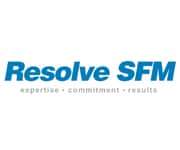Streamlining Ports and Marine Operations Using CMMS
Ports and marine facilities are essential to global trade and critical in transporting goods and commodities. However, managing these large, complex operations comes with significant challenges. From maintaining a wide array of equipment and assets to ensuring safety and regulatory compliance, ports must operate smoothly to avoid costly downtime and delays. A Computerised Maintenance Management System (CMMS) offers a comprehensive solution for streamlining ports and marine operations. Pinnacle Software's CMMS provides a range of capabilities, including asset management, maintenance scheduling, work requests, contractor compliance, risk and incident management, and inventory control—empowering ports to manage operations more efficiently.
Key Challenges in Ports and Marine Operations
The nature of ports and marine facilities presents several unique operational challenges:
- Large-Scale Infrastructure: Ports handle many assets, including cranes, vessels, containers, conveyors, and support systems, which require regular maintenance and management.
- High Operational Costs: Downtime or inefficiencies can result in significant financial losses, impacting global supply chains.
- Contractor Management: Ports often rely on external contractors for repairs, inspections, and specialised services.
- Regulatory and Safety Compliance: Ports must meet strict environmental and safety regulations requiring ongoing monitoring and reporting.
- Inventory Management: Managing spare parts, fuel, and consumables is essential to ensure uninterrupted operations.
With a robust CMMS system, ports can address these challenges, ensuring assets are well-maintained, compliance is met, and operations run smoothly.
- Asset Management and Maintenance Scheduling
Managing the diverse range of equipment in ports and marine facilities can be daunting. A CMMS centralises asset management, providing real-time visibility into asset performance, condition, and maintenance history. Pinnacle Software's CMMS allows port managers to:
- Track asset health and performance: Easily monitor critical equipment like cranes, conveyors, and docking systems to ensure optimal performance.
- Schedule preventive maintenance: Avoid costly equipment failures by scheduling regular maintenance tasks based on asset usage, historical data, or manufacturer recommendations.
- Extend asset lifespan: Ports can extend the lifespan of expensive infrastructure by implementing proactive maintenance strategies, reducing the need for frequent capital investments.
- Streamlined Work Request and Order Management
Managing work requests efficiently is crucial to keeping port operations running smoothly. Pinnacle Software's CMMS streamlines work request management by automating the creation, prioritisation, and assignment of tasks. This ensures that maintenance crews and contractors receive clear instructions and deadlines.
- Easy submission of work requests: Employees can submit requests for repairs or inspections via a user-friendly interface, reducing paperwork and manual processes.
- Real-time tracking: Managers can monitor the status of each work order in real time, ensuring the timely completion of critical tasks.
- Automated notifications: Maintenance staff receive automatic alerts for urgent repairs or upcoming scheduled tasks, ensuring nothing is overlooked.
- Contractor Compliance and Management
Ports often rely on external contractors for specialised repairs, inspections, and services. Managing these contractors effectively is crucial for both operational efficiency and regulatory compliance. Pinnacle Software's CMMS includes contractor compliance management, enabling ports to:
- Track contractor credentials and certifications: Ensure all contractors meet safety and regulatory standards before they begin work.
- Monitor contractor performance: Track work completed by contractors to ensure it meets quality standards and is completed on time.
- Ensure contractor safety compliance: Ensure all contractors adhere to port safety protocols, minimising risk and liability.
- Risk Management and Incident Reporting
Safety is paramount in port operations. Ports must ensure that all activities are conducted with minimal risk to personnel, equipment, and the environment. Pinnacle Software's CMMS includes risk management and incident reporting tools that help ports:
- Identify and assess risks: Proactively identify potential safety hazards and assign risk levels based on likelihood and severity.
- Track incidents and near-misses: Easily log and report incidents, near-misses, or safety violations, ensuring corrective actions are taken.
- Implement risk mitigation strategies: Leverage historical data to identify trends and implement preventive measures to reduce future risks.
- Efficient Inventory Management
Delays in acquiring necessary parts and materials can often cause equipment downtime in ports. Pinnacle Software's CMMS includes inventory management, helping ports maintain optimal stock levels for spare parts, consumables, and tools.
- Track inventory levels: Monitor parts usage and set automatic reordering triggers to prevent stock shortages.
- Improve cost efficiency: Avoid overstocking by only ordering what is needed, reducing storage costs and waste.
- Minimize downtime: Ensure critical parts are always available, preventing delays in maintenance and repairs.
Conclusion
The complexity of managing ports and marine facilities requires robust solutions that streamline asset management, maintenance, compliance, and risk mitigation. Pinnacle Software's CMMS system offers the tools and ports to enhance operational efficiency, reduce downtime, and improve safety. With features like real-time asset tracking, work order automation, contractor compliance management, and inventory control, a CMMS system is indispensable for maintaining the smooth operation of ports and marine infrastructure.
Implementing a CMMS optimises current operations and positions ports for long-term success by improving asset reliability, ensuring regulatory compliance, and minimising operational costs.














